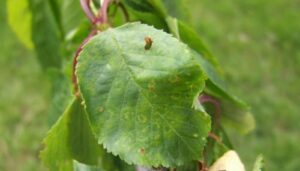Undoubtedly, viruses have changed our way of assessing them since last season. SARS-CoV-2, the virus that causes the COVID-19 pandemic and nearly 37,000 confirmed deaths in our country to date (25 Sep 2021, MINSAL/DEIS) it still has us waiting for a new wave. This has not only affected the population in the unfortunate events reported, it has also generated a great impact on the economy and we will continue to experience its consequences in the coming months.
In our industry, this virus, from the beginning, jeopardized the export process due to possible contamination of products, packaging, etc., which could be “vectors” of the disease; Despite the advances in epidemiological knowledge, there are still situations based on this risk; recently there was a detection in China ofvirus positive New Zealand kiwi, generating questions and eventually difficulties in the marketing process. Beyond COVID-19 and its global consequences that we cannot stop addressing, we have a situation at the local level, which is added, and which will keep us busy during the current season and those to come, due to the quarantine implications of this with China. Your name:Prunus Necrotic RingSpot Virus (PNRSV), of which we will comment and give some keys to avoid the season successfully, in an exercise of questions and short answers.
What is PNRSV?
PNRSV is a pathogen with an old description date, the first antecedents date from the 30’s, therefore it is an old acquaintance. It is an RNA phytovirus of quasi-isometric particles that belongs to thegender Ilarvirus of the familyBromoviridae.
What species does it attack?
It is considered that the first description of this virus in fruit trees was made inpeach tree, but its range of infection is very wide, crossing the species ofPrunus and other species of the Rosacea family, including fruit trees and ornamentals.
What is the mode of spread of PNRSV?
This pathogen is classically classified as a pollen-borne virus. In addition, the seeds are used for dispersal and the use of contaminated material (eg grafting).
What is its distribution in the world?
Due to the dispersion mode, we can speculate about a cosmopolitan distribution and indeed it is so. Reports are common in Europe, Asia (includes China), North America (includes USA) and South America (includes Chile and Argentina), Africa (includes South Africa and Egypt) and Oceania (includes Australia and New Zealand).

Figure 1. Distribution map of PNRSV. Source EPPO.
What is the most common symptomatology?
The name in Spanish would be: Virus de las Manchas Anulares Necroticas dePrunus, which tells us a lot about its main symptoms. The initial symptom (shock) consists of chlorotic spots and rings that evolve to necrotic, especially on young leaves. The necrotic tissues end up falling, leaving holes in the leaves, similar to symptoms caused byPseudomonas or fungus like disease”ammo shot”. Many times, after the aforementioned Shock symptom, the plants return to their normal state, without the presence of symptoms towards the end of the season.

Figure 2. Incipient chlorotic spots and hole in sheet (Source EPPO).

Figure 3. Necrotic spots (Source: EPPO).
In cherry trees, symptoms have been described in fruits, deformations, ring spots and delay in the maturity process are the most recurrent. However, it should be mentioned that, many times, in order for us to observe these types of symptoms, the plants must have two characteristics: they carry more than one virus or have been subjected to stress.

Figure 4. Ringspot symptoms associated with the presence of PNRSV, CGRMV and CNRMV on the same plant. O’Higgins Region. Nov-2020. Source: Laboratorios Diagnofruit Ltda.
Something that should not be left out and very relevant, since it has to do with the diagnostic decision, a plant can be a carrier of PNRSV and be absolutely asymptomatic, so the use of analysis techniques such as molecular such as RT- PCR or serological tests such as ELISA are essential to make an accurate diagnosis of the presence and prevalence of the virus in our orchards.
Is there a better time to analyze the presence of this virus? Using close information, a study in Argentina, was able to infer through ELISA analysis, using absorbance levels, the presence of PNRSV in peach plants during the season. They were able to quantify, starting from dormant buds, without major problems, with apeak in November, when leaf development is close to the maximum, to then decline in summer below the detection level. This indicates that the best period for sampling is spring, in the case of cherries and adjusted to the Chilean reality, it would extend between October and mid-December.










